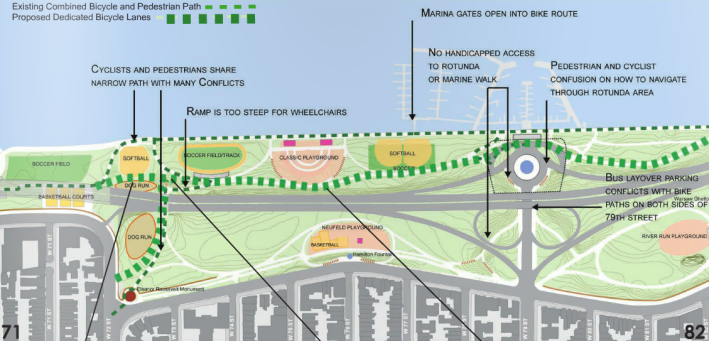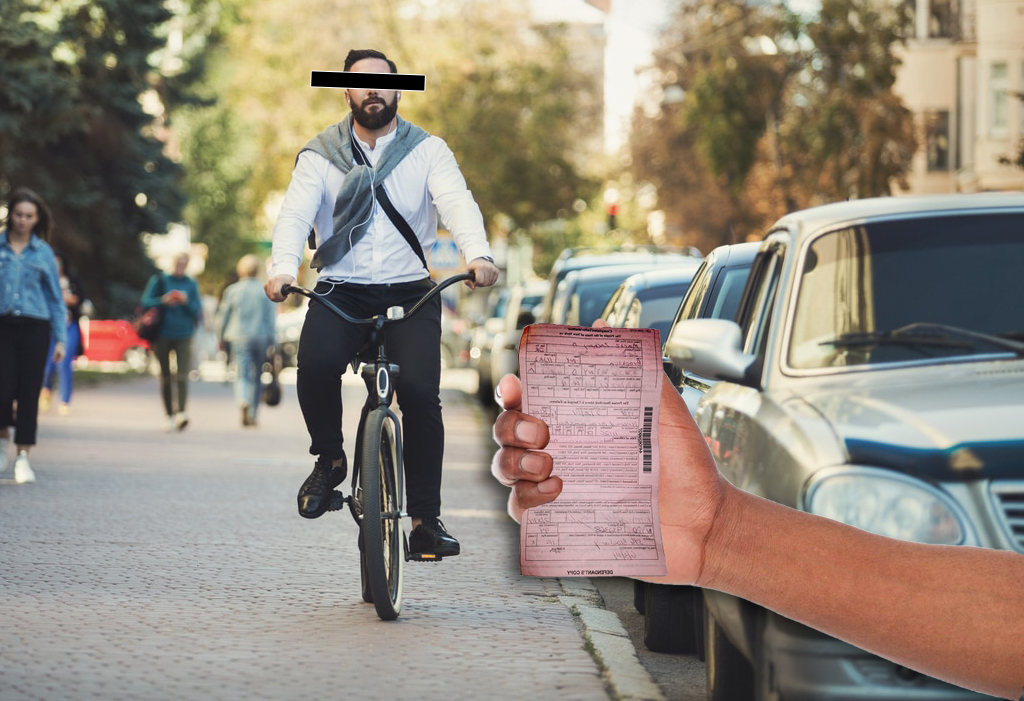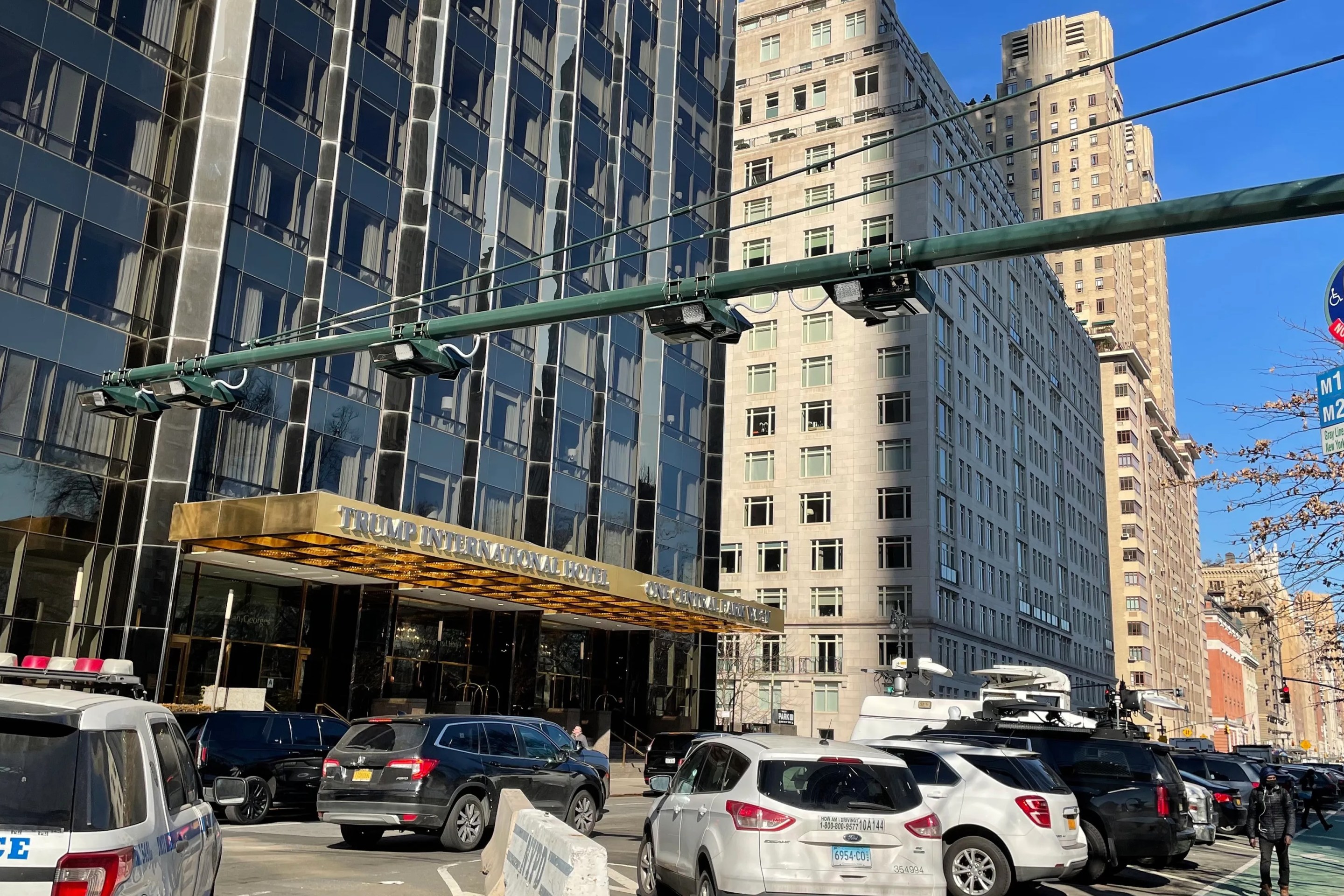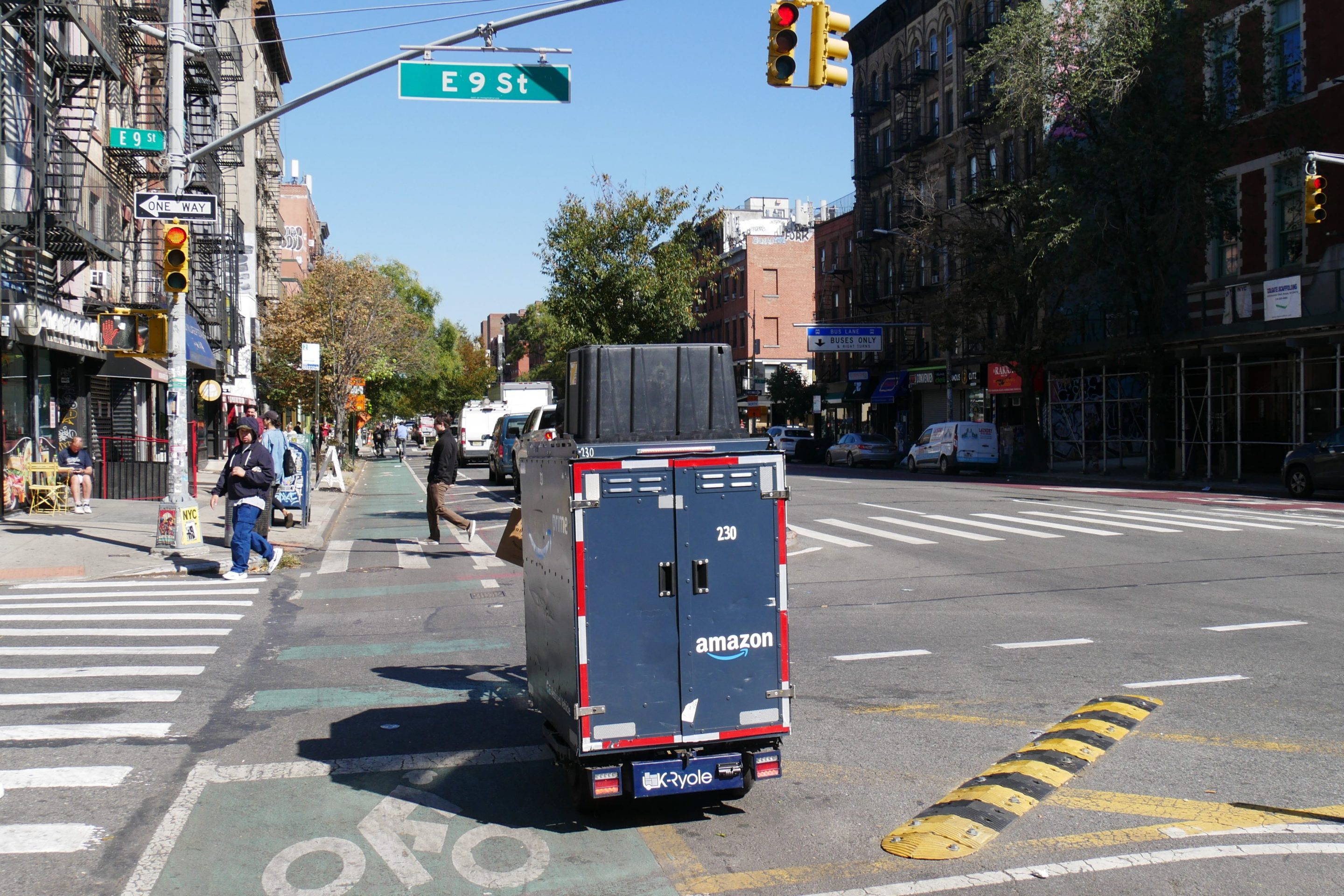A $150-million street reconstruction project that will throw Hudson River greenway cyclists into the mix with highway-bound automobiles on the 79th Street Rotunda remains unchanged, despite years of pleas from the local community board.
City Parks and Transportation officials brought roughly the same plan to Manhattan Community Board 7 on Tuesday as they did in 2020 and then again in 2022, ignoring years of calls from board members for better protection for cyclists in the Robert Moses-era rotunda on-ramp.
“With the space that we have, we cannot accommodate a protected bike lane in that area,” DOT official Colleen Chattergoon told CB 7 members on Tuesday, citing space “constraints.”
The conflict stretches back to 2016, when the Parks Department — with the support of CB 7 — rerouted cyclists from the busy waterfront path onto a stretch of hilly parkland and eventually up and down the rotunda structure itself. The traffic circle, which sits atop a fountain plaza area and a Parks Department garage, sees heavy traffic from the high-speed Henry Hudson Parkway via the 79th Street Bridge.
The joint Parks-DOT collaboration initially included only a painted, unprotected bike lane up around the rotunda, but lacked sufficient protection for cyclists such as physical dividers, caution signs or rumble strips. In 2019, CB 7 members voted unanimously in favor of a resolution calling for a protected bike lane at the location.
City officials seem to have overlooked CB 7’s recommendations other than to change a yield sign to a stop sign. The hilly detour remains in place nearly nine years later.

After DOT representatives provided a project update on Tuesday without mentioning any potential changes, Carl Mahaney, architect and organizer for StreetopiaUWS, a project of Streetsblog’s parent organization Open Plans, asked for clarification on whether construction would implement features to slow drivers and protect cyclists.
“Do you believe the current design of the 79th Street Rotunda Circle would be safe for a child to use while riding their own bicycle?” Mahaney asked the DOT and Parks representatives.
“If the answer is no, then we need to decide where it is safe for children — and those that are a little more vulnerable and a little less confident — to be able to ride, to leave our street grid and access the greenway … As a cyclist who rides with a child, often it is something we experience as a discomfort and a little bit of a stress point in what is otherwise a car-free greenway.”
Later on, a member of CB 7, Ken Coughlin, asked whether or not the city had considered the 2019 resolution and its findings. The two city agencies then went back and forth on which of them could answer the question.
“This is, I guess, for DOT. Or if not, something you can review,” a Parks official said. “I don’t know if we cover that area. If that’s under our jurisdiction, I would have to find out. It’s more likely Parks, not DOT,” Chattergoon replied. “I can share [the resolution] with our Bikes division, and we’ll definitely review it and get back to the board.”
Chattergoon added that DOT wants to add better signage and potentially an alternative cyclist path elsewhere in the park, although did not share specific details.
Adding onto the tally of concerns, Mahaney also asked whether there were plans to mitigate conflict between cyclists and motorists, who cross paths as drivers park in the structure’s garage. Riverside Park Administrator John Herrold responded that the problem is “not new” and that planners have “always taken that into account,” but did not indicate any plans to make changes.
In an interview after the meeting, Mahaney expressed frustration with the project’s management. The project is a mere bridge redesign that fails to capitalize on capacity for accessible infrastructure, he said.
“The signal [the Parks Department] sends is that they don’t seem to care a ton, and it shows,” Mahaney said. “The user experience of these things as a cyclist shows that they haven’t put a lot of effort into the designs.”
Rather than addressing concerns about cyclists and pedestrian safety in their presentation, Parks officials spent the last few minutes of their presentation discussing stone turtles being built for the project at a masonry in California.

The rehabilitation project is expected to wrap up next year. Construction on the nearby 79th Street Boat Basin is expected to begin sometime after that, ensuring more headaches for pedestrians and cyclists.
A timeline of the boat basin detour:
- 2016: Manhattan Community Board 7 votes for bike path to be routed via detour through the 79th Street rotunda.
- 2018: DOT unveils project rehabilitating 79th Street Rotunda which draws criticism.
- 2019: Community board criticizes detour, asks instead that the waterfront path be improved for both pedestrians and cyclists. Parks Department says no, makes meager upgrades to the detour route.
- 2019: Community board votes against a proposed DOT renovation of the 79th rotunda because it lacks adequate protection for cyclists.
- 2020: DOT and Parks go ahead with the unprotected bike lane plan.
- 2022: DOT and Parks again reject safety concerns of activists.
- 2025: DOT and Parks continue to ignore concerns about the rotunda.
- 2026: Expected project completion date.






